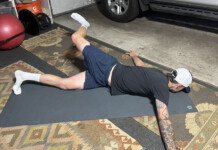“Bike fits are not one size fits all. They are a snapshot in time. Fit the cyclist first, then adapt the bike.” — Renowned bike fitter Happy Freedman
By Dave Harward — A bike fitter should take their training and experience and use it in tandem with the individual rider experience. That requires interpreting what the rider communicates of their sensations and thoughts about their historical position and then what they sense and feel about the changes and the updated position.
Bike fit is about finding the individual rider’s ideal position in space and then either custom building a bike around that or finding the best option of bike size for the rider and adapting the components around it. The bike should be a reflection on the rider.
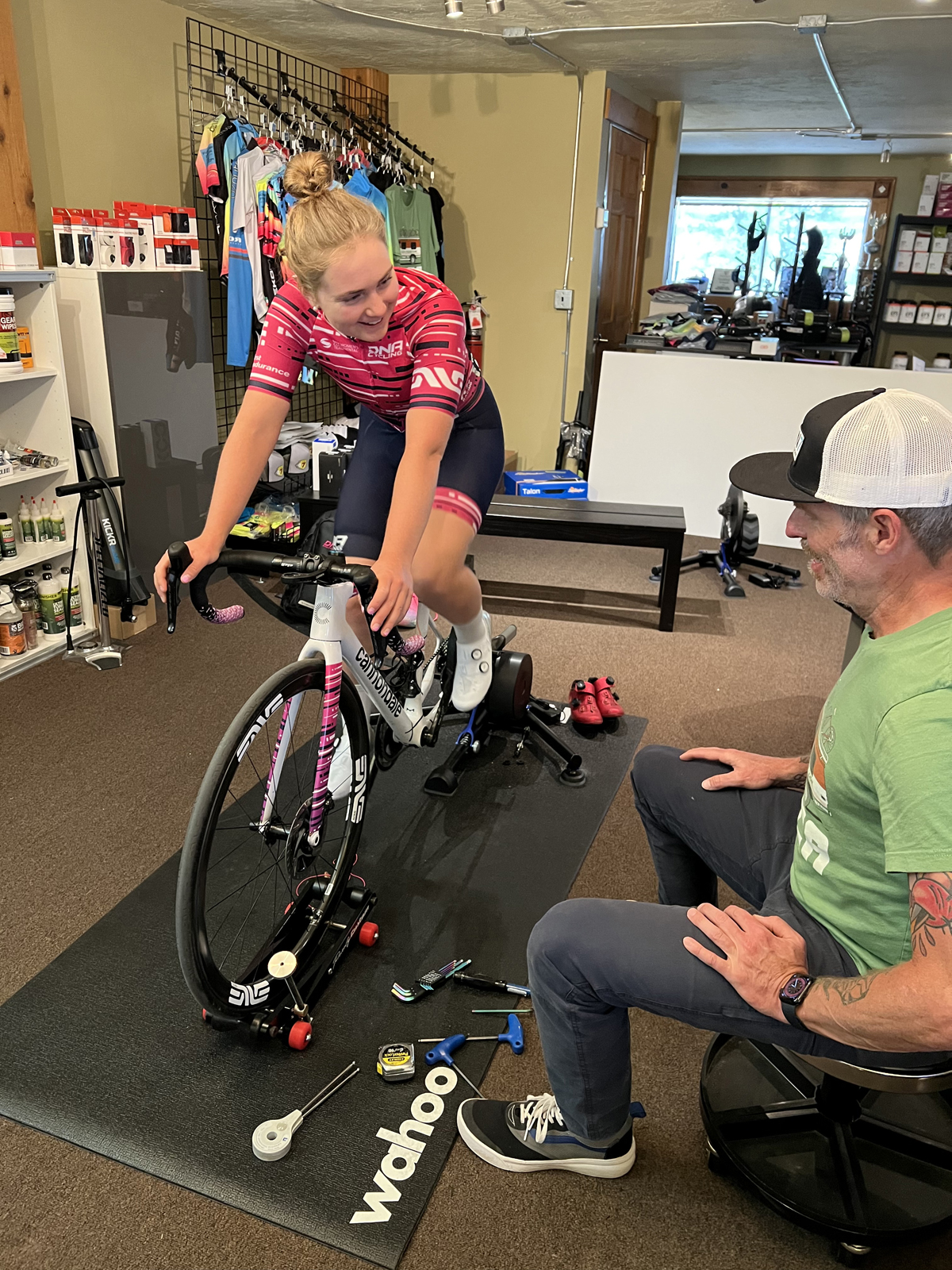
Greg Lemond’s competitive success in cycling was amazing in a career that spanned more than a decade and featured 3 Tour de France wins. Since he was so successful, the idea was that if his position on the bike was replicated, we would all rally like Greg Lemond. Well, his anatomy was not that of the normal person as he had unusually long femurs. His fit was for him.
The story goes that Lemond’s French coach Cyrille Guimard determined the optimal saddle height as being .883 of measured inseam from the center of bottom bracket to top of saddle measurement. That was likely unique to Lemond since it doesn’t account for seat tube angle or crank length. Essentially it assumes that each rider would have the same proportions relative to their height, which is far from individual.
There are a variety of considerations for individuality for saddle height and ultimately leg extension.
Here are just a few:
- Pedal system and shoe sole height
- Fore/aft cleat placement
- Saddle set back
- Crank length
Adjusting each of these impacts the levers of the legs and feet in relation to the crank line-up to maximize and optimize the force from leg extension.
Pedal System & Shoe Sole Height
First, consider the height of the pedal-shoe combination. Shoes and pedals from various manufacturers vary in height from the center of the spindle. When the foot is at bottom-dead-center (BDC) of the pedal stroke, the height of the interface of the shoe/cleat combination is different with a Specialized shoe/Look pedal setup than a Shimano shoe/Shimano pedal setup. While the difference in interface height might be minimal it will have an impact on overall leg extension.
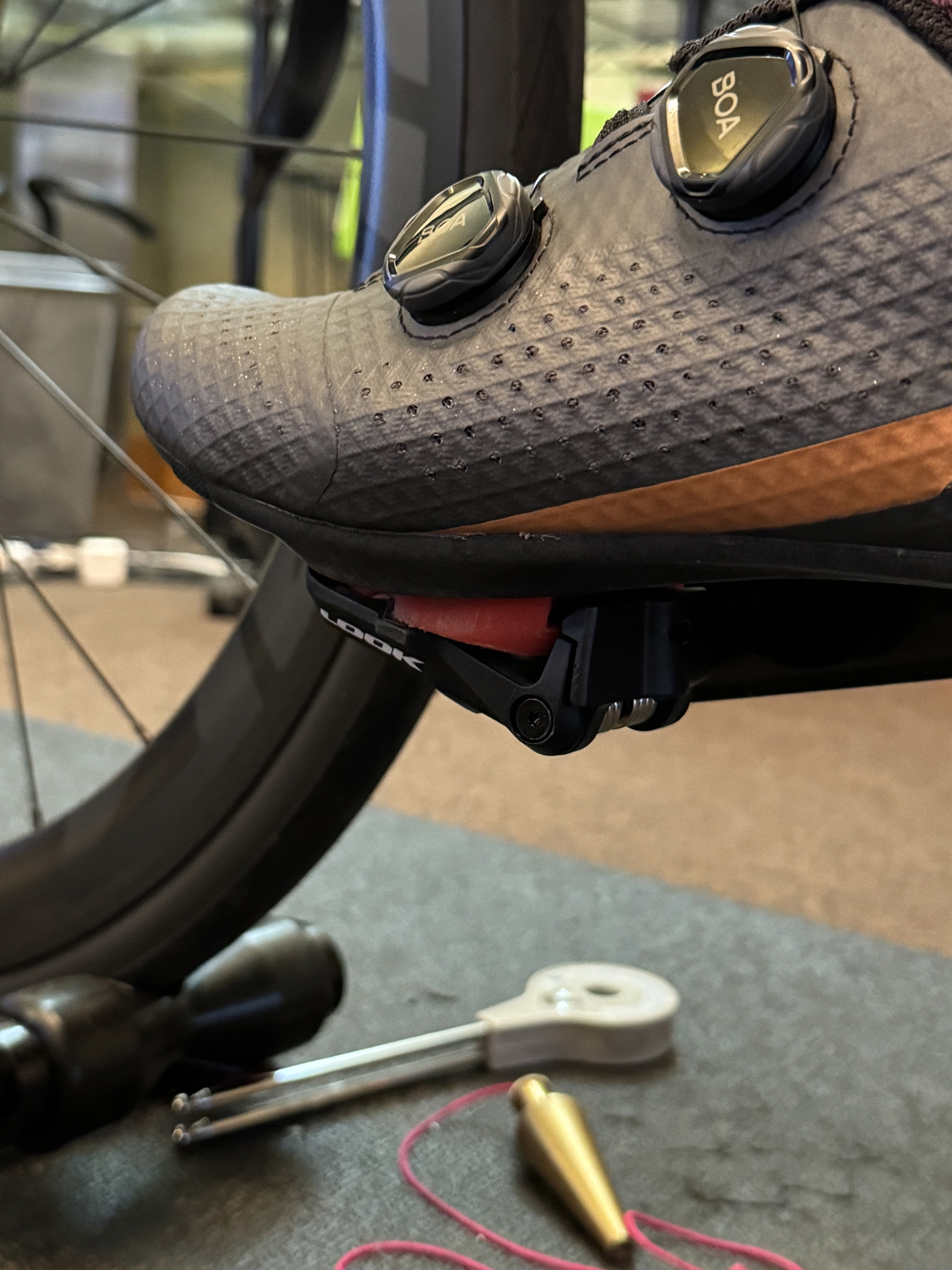
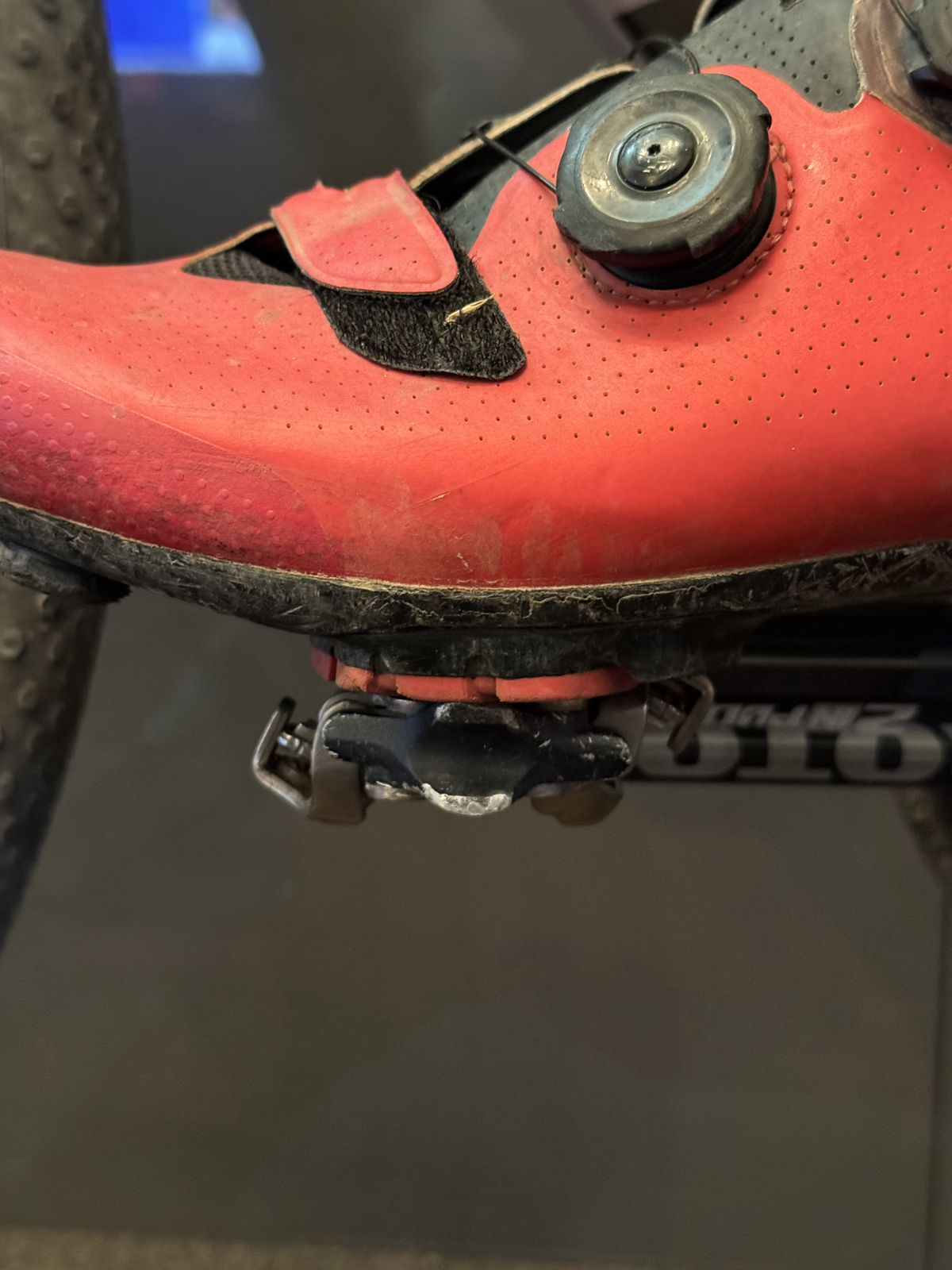
Fore-Aft Cleat Placement
Traditional cleat placement looked at centering the inside ball of the foot directly over the pedal spindle when the crank is pointed forward, horizontal to the ground. A newer approach is to place the cleat where the inside ball of the foot is slightly forward of the pedal spindle when the crank is pointed forward, horizontal to the ground. This newer approach was in response to the complaints of toe numbness and overall foot discomfort.
The impact of fore-aft cleat placement can affect leg extension and thereby impact saddle height. Moving the cleat forward on the shoe effectively lowers saddle height while moving it back on the shoe increases saddle height. Fore-aft cleat placement is important in individualizing bike fit since it impacts foot comfort and is part of the process of setting up even pressure across the forefoot.
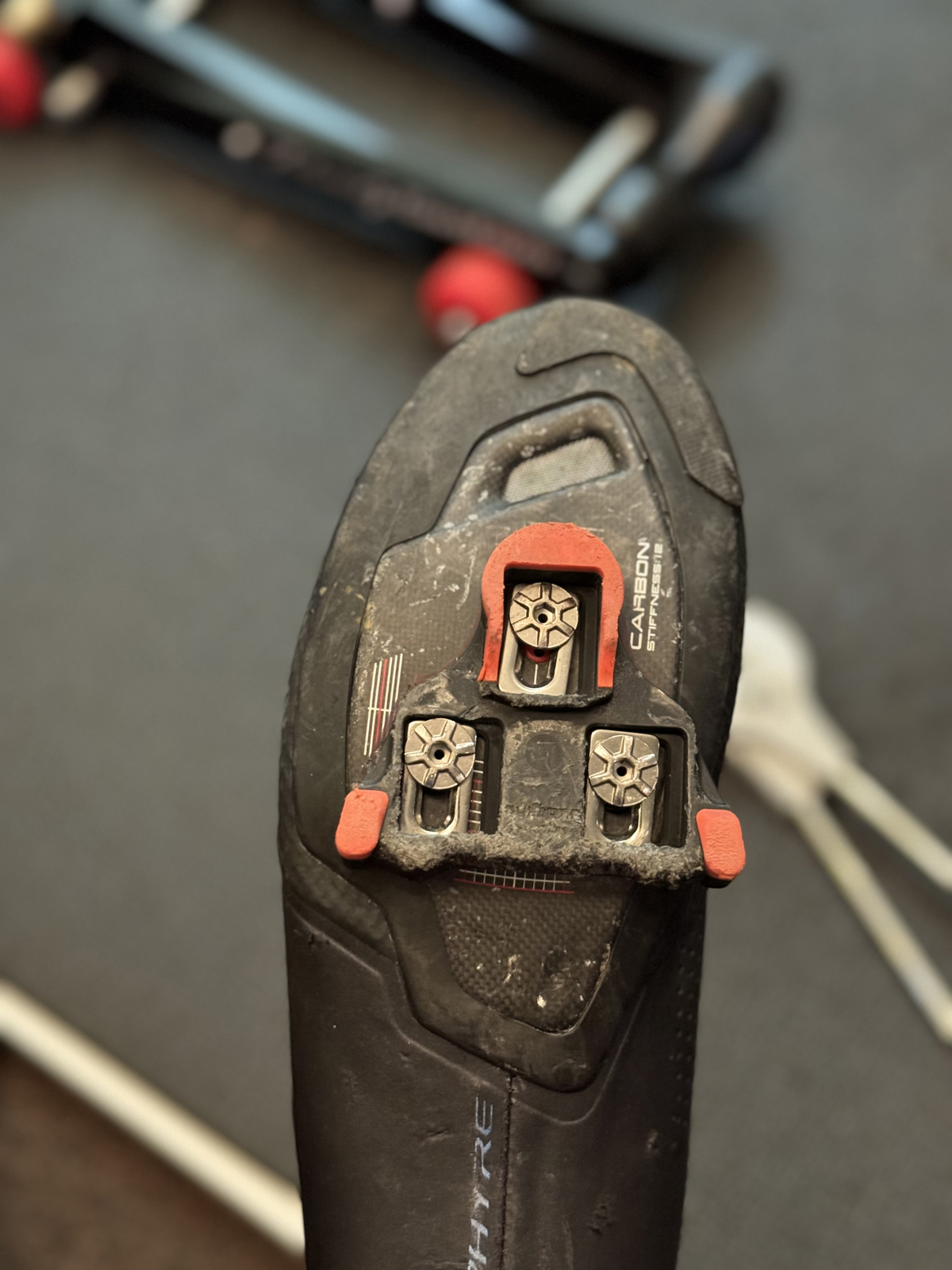
Saddle Setback
Saddle setback is also unique in the individualization of bike fit. It accounts for positioning the knee in relation to the end of the crank. In most simple terms, moving a saddle forward results in decreasing overall leg extension while aft will increase leg extension for a given saddle height. Note that saddle setback is not a positioning method to improve reach to the handlebars. Saddle setback adjustments are used to set up the best position for “engine room” of the cyclist, finding the ideal leg extension and relationship of the knee to the crank to optimize muscular efficiency and protect the joints.
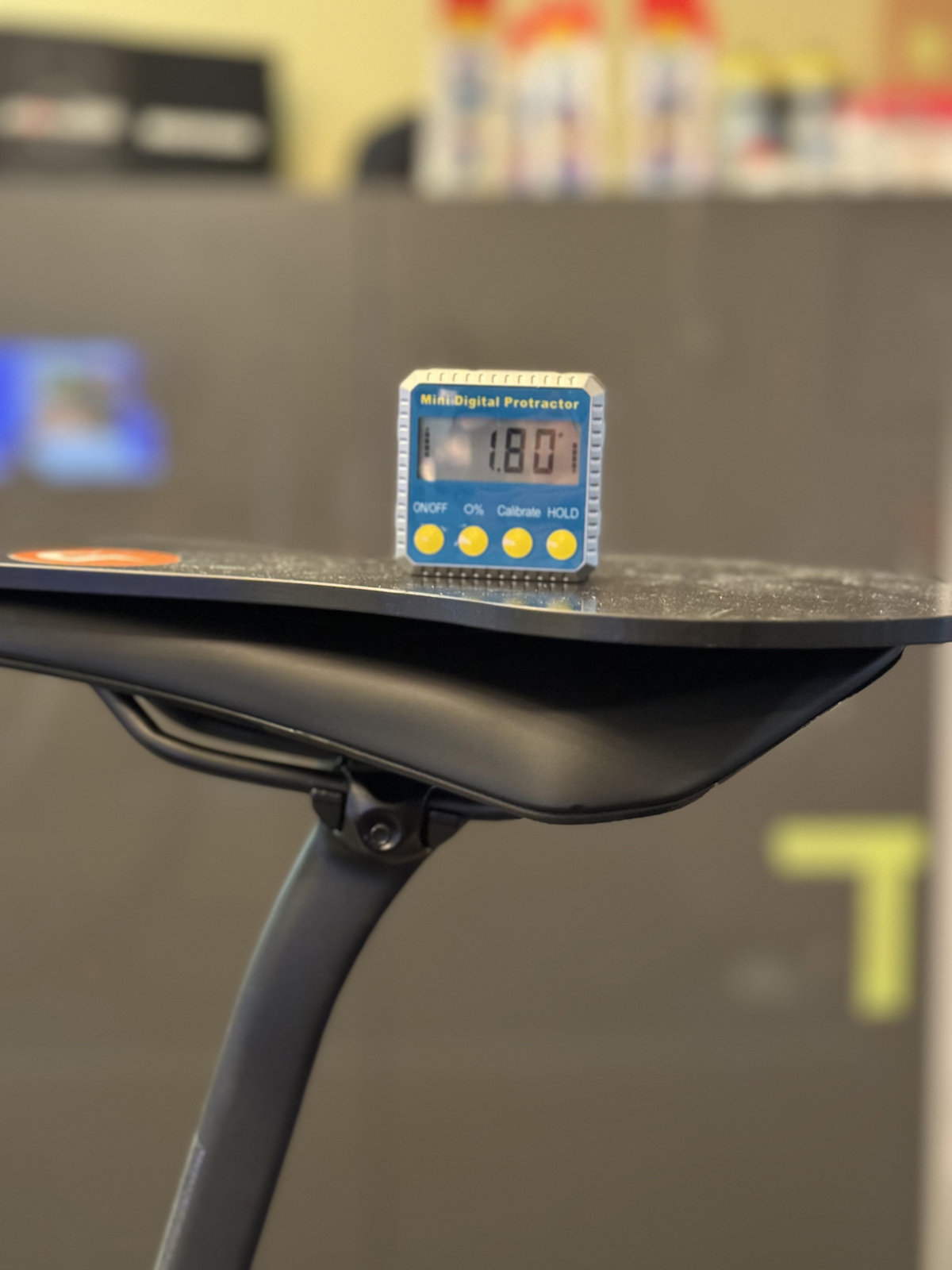
Protecting the joints is obviously an important aspect in optimal bike fit. The KOPS (knee over pedal spindle) method suggests that positioning the saddle height and fore-aft would place the knee vertically over the center of the pedal spindle with the crank at 3 o’clock. Which part of the knee? This method measures from the tibial tuberosity, the bump on the front of the tibia just below the knee cap. A related method would be to position the front of the kneecap vertically over the end of the crank at 3 o’clock.
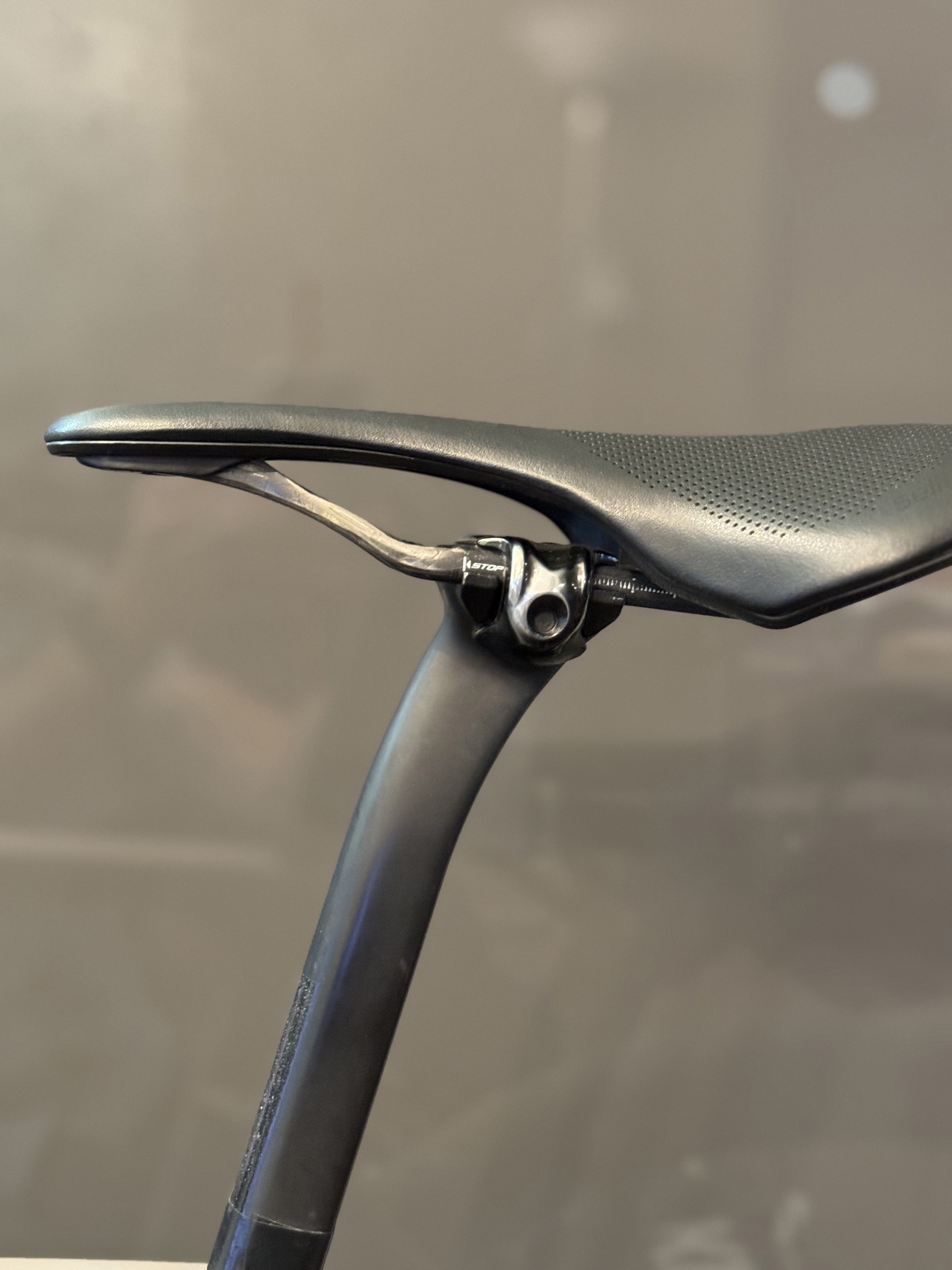
Saddle setback is mostly influenced by the length of the rider’s femur. Not everyone who is 5’10” has the same femur length so the ideal position in space is unique to their body proportions. When combined with an optimized saddle height, this method of positioning the knee relative to the pedal spindle/end of the crank at 3 o’clock is done to help reduce forces compressing the patella.
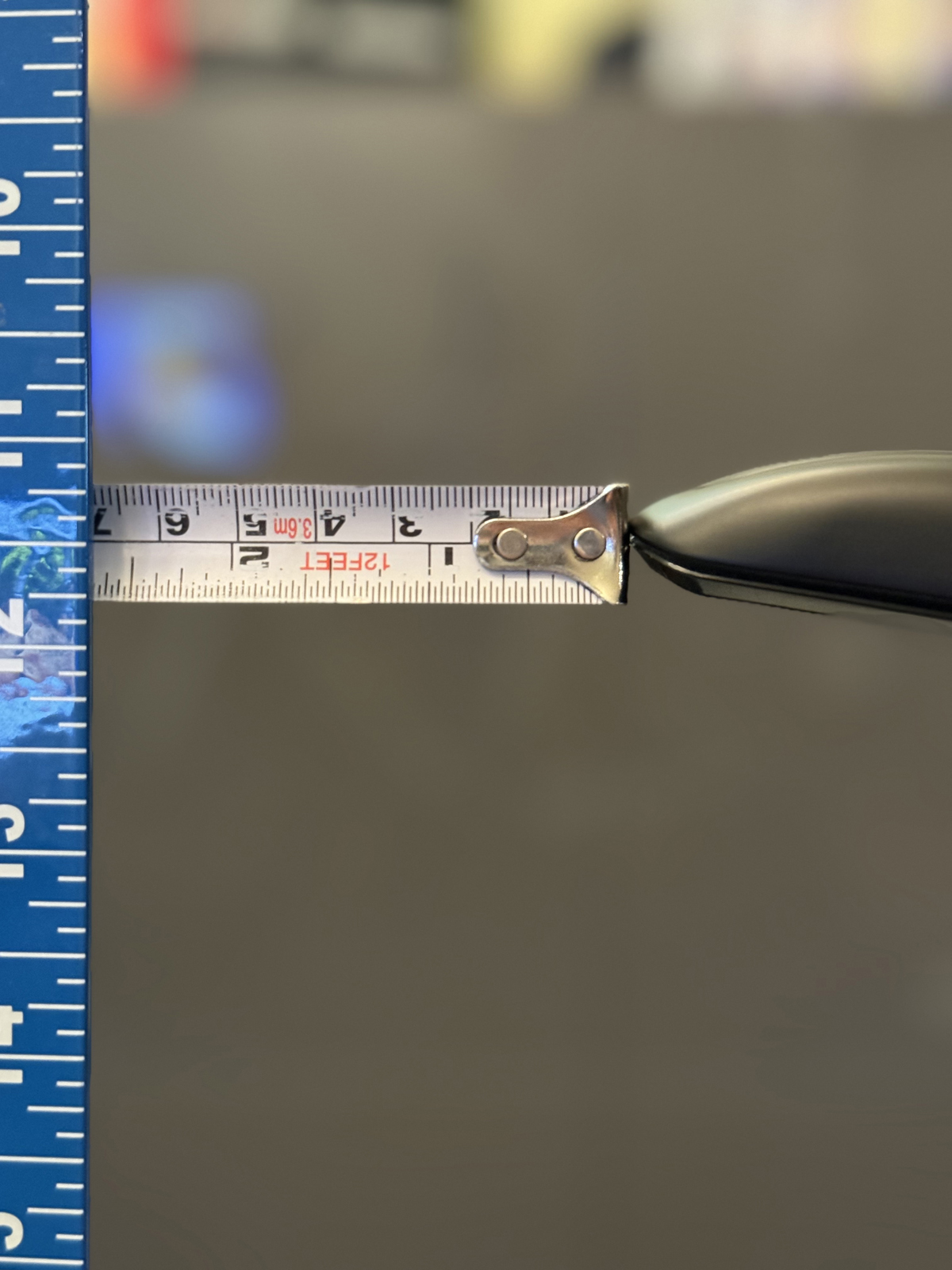
Crank Length
Crank length is a frequently debated consideration in the bike fit world. There are many questions about crank length; most of which revolve around shorter cranks. The crank is the lever we use to transfer power to the drivetrain. A longer crank provides more leverage per pedal stroke. Crank length impacts leg extension and is a factor in determining saddle height and setback. Long cranks will increase overall leg extension and change the positioning of the knee in relationship to the cleat/pedal interface throughout the pedal stroke. Alternatively, a short crank will decrease leg extension.
Crank length selection can be a challenge. When you buy a new bike, manufacturers generally don’t provide options of crank length per size. For example, a small (50-52cm) sized road bike will almost always come standard with 170mm cranks while a large (56-58) might deliver with 172.5 or 175mm cranks. Many shops will work with you and trade out the crank for a specified length. Alternatively, one might decide to build their bike from a frameset and thus crank length is an important consideration.
Optimal crank length allows the quadriceps and gluteus muscles to extend the leg with efficiency. This goes hand in hand with saddle setback when the optimal saddle height is determined. There are a few reasons to go with a shorter crank length:
- Improved aerodynamics – time trial and triathlon set up can be positively impacted when a rider has a very aggressive seat to bar position. If the rider’s torso gets in the way of the knee at the top of the pedal stroke it may be time to consider a shorter crank.
- Improved turnover and reducing overall torque – when a rider is struggling with turnover in pedaling or needs a reduction in overall torque to initially start pedaling or maintain consistent cadence, a shorter crank can make it easier. Improving turnover is important since torque for a given power increases as cadence drops. When the crank is shorter you lose leverage.
As mentioned, these are just a few of the many considerations in optimizing bike fit. They address the “engine room” of the cyclist’s position. Adjustment of one factor will impact the others since we are working in the triangle of saddle height and saddle fore-aft in relationship to the crank-pedal position. A trained and experienced bike fitter will account for the impact of each adjustment.
Bike fitting is an individualized process. Formulas can provide good starting points to ensure the rider is looking at the proper size of bike or potentially determining a start point of saddle height, crank length, or reach to the handlebars. An optimized position relies on individualizing the rider’s position in space and then adjusting the bike to make it a reflection of the rider. Future installments will include detailed discussion on each consideration.
Find a bike fitter with training and background to ensure they interpret your experiences and sensations on the bike into a comfortable and high-performing fit.

